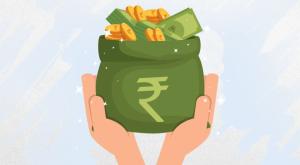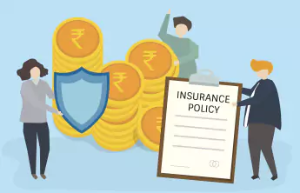Planning for Your Children's Education
Blog Title
301 |
The most valuable gift that the parents can give to their children is good quality education. At the same time, it is also the most expensive gift. We ask our children what they want to be when they grow up. And as parents, we must ensure that this goal is met and that we have adequate funds to meet this financial need.
Aspects that dictate your planning
Timing: Timing is of the essence; once a child is born, you have an 18 year timeframe post which the need for higher education will arise. So there is no point in planning for 18 and ½ years or even 17 years. If you are late, then the child loses the benefit of enrolment and if funds come early to you, it is a natural human tendency to spend.
As a thumb rule, the minimum investment time is 18 years, i.e. when the child is born. Unmarried individuals can increase the time duration by adding 18 years to the probable year of having first child after marriage.
Cost of education: Planning should be done for the costliest education available. No one knows which stream the child may adopt. Having surplus funds is an added advantage.
A thorough analysis is required to determine the cost of education. Just assuming a random figure will not solve the purpose. Apart from the tuition fee, other expenses like boarding & lodging expenses, Books and stationary, uniform (if any), electronic accessories like tablet, laptop etc. must also be kept in mind.
Inflation: It is considered good for the economy as along as it stays in single digit. This is because the demand for product and services should be slightly higher than the supply. But on the other hand, it starts to devaluate the currency.
Year |
Inflation (%) |
1996 |
9.3 |
1997 |
9.3 |
1998 |
6.7 |
1999 |
11.6 |
2000 |
4.0 |
2001 |
3.7 |
2002 |
4.4 |
2003 |
3.8 |
2004 |
3.8 |
2005 |
4.2 |
2006 |
6.1 |
2007 |
6.4 |
2008 |
8.4 |
2009 |
10.9 |
2010 |
12 |
2011 |
8.9 |
2012 |
9.3 |
2013 |
10.9 |
*Source World bank
The average inflation for the past 18 years works out to 7.43%
Difference between Real and Nominal interest: The nominal rate of interest is the interest rate before any adjustment for inflation is done. The real rate of interest is the return on your investment after adjusting the rate of inflation. For example in year 2005 the nominal rate of interest in PPF was 8% and real rate of interest was 3.8% (8% – 4.2%). Hence it is the real rate of interest which we should consider for future as well as child’s education planning.
Calculating the present value of money: Present value gives an idea as to what the current value of Rs.1 will after a specified number of years, depreciating at a given rate. For example, if 44 lakhs is required to get a MBBS degree. Assuming that the average inflation rate will be 7.43% or say, 7%, then after 18 years, the value of 44 lakhs will be reduced to Rs.13.024 Lakhs of present day value.
Calculating the future value of money: Gives an idea as to what the value of money would be after a specified number of years at a given rate of compound interest.
Building on the example mentioned above, the cost for MBBS course is Rs.44 Lakhs in the present day. Assuming the inflation rate is 7%, then after 18 years, Rs.1,48,71,702 will have the same value as of present day Rs.44 lakhs. The future value factor (with periodic payment at end of year) at 15% is 40.45 for 18 years. By dividing 1,48,71,702 by 40.45, the required yearly investment comes out to 3.67 lakhs.
So essentially, one would have to save Rs.3.67 lakhs yearly, or Rs.30,639 monthly, to meet the education expenses after 18 years.
What to look for in an investment? SLR (Safety, Liquidity and Returns) are the three features to look for before investing. Safety means the soundness of the issuer to repay the principal along with interest. ‘Higher the safety, lower the return’. Conversely, ‘Higher the risk, higher the return‘. Liquidity refers to the quickness with which you can convert your investment into cash. ‘Higher the liquidity, lower the return’. Returns is the income earned over the investment by way of interest, dividend, capital gains, appreciation etc.
Which financial instrument to invest in: The instruments available for investment these days include equity shares, government securities, corporate bonds, bank deposits, saving bonds, Kisan Vikas Patra, National saving certificates, post office time deposits, insurance and money market instruments.
ULIPs happen to be a prudent option for your child’s education planning. The reasons for that are: –
- Life cover in case of mishap
- Maturity amount is tax free.
- Gives 15% to 20% return over longer time horizons
- Tax rebate u/s 80C
- Monthly investment option available
- Switching between equity and debt fund is available.
- Top up is allowed.
To sum it up, start with identifying the time period and the present day cost of education. After that, using real rate of interest, calculate the monthly saving required using the future value table at the given interest rate.












